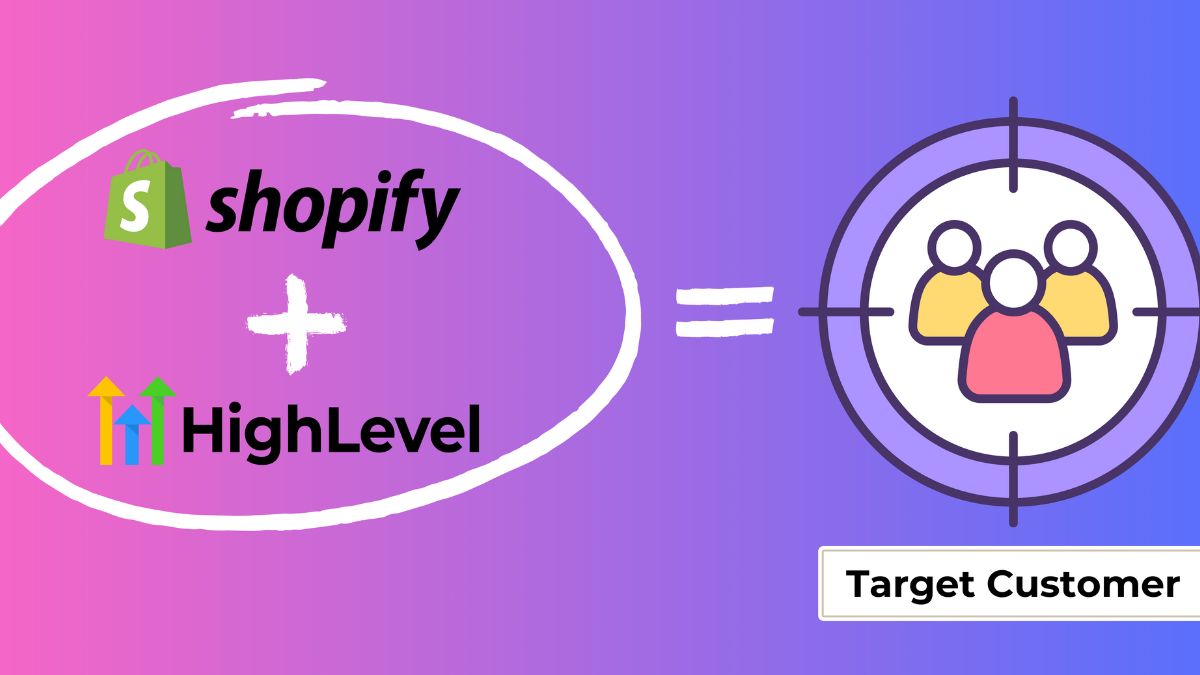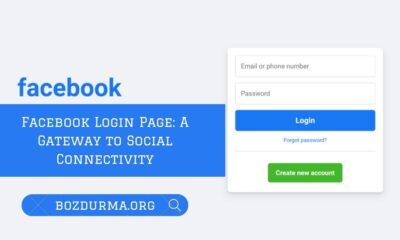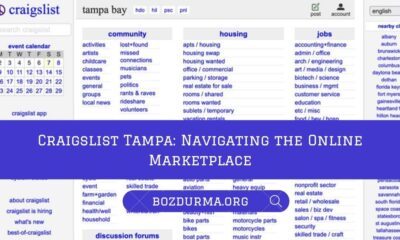BUSINESS
Business Insurance Levantam: Protecting Your Enterprise

Entrepreneurs have a lot riding on their shoulders in the ever-changing business world. Business insurance is a powerful tool for protecting your company from calamities. Whether you’re just starting out or have been in business for years, protecting your business and its assets with the appropriate insurance is a top priority. In this post, we’ll delve into the subtleties of “Business Insurance Levantam” to better equip you to run a successful business.
1. The Importance of Business Insurance
A safety net for your business, if you will, is insurance. It’s a safety net in case anything bad happens, like an accident, a natural disaster, or a legal obligation. If you don’t have the right kind of insurance, your company could suffer devastating financial losses that could force its liquidation.
2.Types of Business Insurance Levantam
-
Property Insurance
If your company’s facilities, machinery, or stock is damaged or destroyed, your property insurance will pay for the repairs or replacement costs. It aids in a speedy restoration after disasters such as fires, burglaries, or vandalism.
-
Liability Insurance
Your company is protected from lawsuits, including those alleging negligence, by purchasing liability insurance. In the event of a lawsuit, it will help pay for any associated legal bills and settlements.
-
Workers’ Compensation Insurance
Workers’ compensation insurance pays for medical expenses and lost wages if an employee is hurt or becomes ill on the job. It’s not simply the law in many areas, but also the right thing to do for your staff.
-
Business Interruption Insurance
If something were to disrupt your business operations and cause you to lose revenue, business interruption insurance would compensate you for that. It makes sure that you can keep paying your regular payments and the wages of your employees.
3. Assessing Your Insurance Needs
Assess the risks faced by your company to establish the type and amount of insurance coverage needed. Think about the industry you’re in, where you are, and how much your assets are worth. The first step in creating an insurance plan that fits your needs is doing a thorough analysis.
4. Choosing the Right Insurance Provider
Choosing a reliable insurer is essential. Compare insurance policies and providers to find one that meets your needs at a price you can afford. It’s always a good idea to do some research before making a purchase.
5.Crafting a Tailored Insurance Policy
When it comes to protecting your company, there is no “one size fits all.” Consult with your insurance company of choice to tailor a policy that meets your requirements in terms of coverage levels and out-of-pocket costs.
6.Factors Affecting Business Insurance Levantam Costs
Costs for commercial insurance policies are affected by a number of variables, such as the business’s location, industry, and claims history. You can make better policy choices after you have a firm grasp of these factors.
7.Case Studies: Real-World Benefits of Business Insurance
Let’s look at some real-world examples of how insurance has rescued failing businesses. The importance of being ready for unforeseen challenges will be emphasized through these case studies.
8. Insurance Claims: Navigating the Process
Knowing how to file an insurance claim is essential in case you ever need to make use of it. We’ll show you how to file a claim so that it goes through smoothly and causes as little trouble as possible for your company.
9. Conclusion
Business insurance is not an option; it’s a necessity for safeguarding your enterprise. Don’t wait until disaster strikes – be proactive in protecting your business’s future. By choosing the right insurance coverage and provider, you’ll ensure that your business remains resilient in the face of adversity.
10.FAQ’ s
1. Why is business insurance important?
Protecting your company from financial collapse due to unforeseen catastrophes is why business insurance is so important. Peace of mind and safety are both boosted by this.
2.How do I determine the right insurance coverage for my business?
Determine the coverage you need by analyzing your risks and discussing them with insurance agents.
3.What factors affect the cost of business insurance?
Insurance rates are affected by several variables, such as the coverage chosen, geographic region, and business sector.
4.What should I consider when choosing an insurance provider?
Think about the provider’s history, services, customer support, and pricing to find the best fit.
5.How can I make a successful insurance claim?
Keep detailed records, report the occurrence to your insurer right away, and adhere strictly to their claim procedures.
BUSINESS
Connect Shopify Forms to HighLevel: Streamlining Your Business Processes

Connect Shopify Forms to HighLevel: In the ever-changing realm of electronic commerce, effectiveness and smooth functioning are crucial. Integrating Shopify forms with HighLevel may be a game-changer for companies who use HighLevel for marketing and customer relationship management and Shopify for their online storefronts. This post will walk you through each stage of the procedure, including the advantages, requirements, difficulties, and best practices for a fruitful integration.
1. Understanding Shopify Forms
Shopify forms are vital for obtaining the data that is needed from clients. These forms are the entry point to important information that drives your business strategy, whether they are used for purchase processing, newsletter subscriptions, or contact forms.
2. Exploring HighLevel
Conversely, HighLevel is a full-featured marketing and CRM platform made to improve customer relationship management, automate marketing procedures, and expedite communication. Because of its powerful features and easy-to-use design, it is the first choice for companies trying to improve their marketing.
3. Benefits of Connecting Shopify Forms to HighLevel
The combination of HighLevel with Shopify forms has several benefits. Businesses may improve customer relationship management overall, optimize marketing automation, and speed data collecting by smoothly integrating these two systems.
4. Step-by-Step Guide to Connect Shopify Forms to HighLevel
Accessing the Shopify Admin Dashboard:
Log into your Shopify admin dashboard to get started.
Integrating HighLevel with Shopify:
Go to the Apps area, look for HighLevel, and select the integration option.
Customizing Form Data Synchronization:
To guarantee a seamless data transfer between Shopify forms and HighLevel, adjust the synchronization parameters to your specific business requirements.
5. Common Challenges and Solutions
Although the integration procedure is usually simple, users sometimes run into difficulties. There may be problems with form customisation or delays in data synchronization. But most problems have easy fixes, and our troubleshooting advice will help you find them.
6. Best Practices for Optimizing the Connection
For the connection to be optimized, data security must be guaranteed, and HighLevel features must be utilized efficiently. Successful integrations depend on frequent setting updates, data flow monitoring, and awareness of new capabilities.
7. Success Stories
Empirical instances demonstrate the revolutionary potential of integrating Shopify forms with HighLevel. Enterprises have seen enhanced productivity, amplified client involvement, and a noteworthy surge in revenue.
8. Future Trends in E-commerce Integrations
E-commerce connections change along with technology. Keep up with the times by being aware of new trends and how platforms like HighLevel and Shopify are evolving to provide businesses innovative alternatives.
9. Case Study: A Business Transformation
Explore a thorough case study that demonstrates the real-world advantages of combining HighLevel with Shopify forms. Examine how a company had a good transition, such as improved data management or more focused marketing efforts.
10. User Feedback and Reviews
Find out what others are saying about the Shopify-HighLevel integration from users. Constructive criticism and encouraging comments offer valuable perspectives on the usefulness of combining various venues.
11. Comparison with Alternatives
Although there are many platforms with connection choices, HighLevel is unique due to its strong features, easy-to-use interface, and smooth Shopify compatibility. To make an informed choice, weigh the pros and cons of the many options.
12. Tips for Maximizing Results
To get the most out of HighLevel after the first integration, make use of its other capabilities. For long-term success, investigate cutting-edge features and put continuous optimization techniques into practice.
13. Conclusion
In conclusion, companies looking to streamline their processes would be wise to integrate Shopify forms with HighLevel. Businesses are able to get useful data, automate marketing procedures, and improve client interactions thanks to the smooth connectivity. Accept the e-commerce of the future by forming this strong collaboration.
14. FAQs
1. Is the integration process complicated?
Not at all. The setup procedure is made simple with our comprehensive guide, and the integration process is easy to utilize.
2. How secure is the data transfer between Shopify and HighLevel?
Data security is a top priority for both systems. Secure and secured data flow is guaranteed by the integration.
3. Can I customize the form fields for synchronization?
Unquestionably. During the integration process, adjust the form data synchronization based on your business requirements.
4. Are there any additional costs associated with the integration?
The service usually includes some level of basic integration. But be sure to look for any conditions or other features that can have an additional fee.
5. What if I face issues after integration?
You may get troubleshooting advice from our post, and Shopify and HighLevel both have support teams that are committed to helping you.
BUSINESS
Pfizer Layoffs: Navigating Challenges and Embracing Change

The announcement of massive reductions in staff at Pfizer, the world’s largest pharmaceutical company, recently grasped headlines. The move has many questioning why it has been chosen along with what it means for the organization and the employees it employs.
1. Reasons Behind Pfizer Layoffs
Pfizer’s decision-making of organizational change had been influenced by changing market conditions, since the pharmaceutical sector is recognized for its unpredictable character. Job reductions are a result of the company’s desire to remain competitive and adapt to changes in the competitive landscape, as stated by law enforcement.
2. Number of Employees Affected
Numerous departments are affected by the massive number of layoffs, which affect thousands of workers. The departments that were most severely impacted and the total amount of layoffs are highlighted in this section that digs into the numbers.
3. Impact on Pfizer’s Finances
There are consequences for money in addition to the human element. In addition to examining how the stock market has reacted to this corporate action, the piece also examines how the layoffs have affected Pfizer’s financial results.
4. Employee Support Initiatives
Severance benefits and reemployment support initiatives have been implemented by Pfizer to lessen the impact on impacted workers. An extensive examination of these programs and their methods for assisting the unemployed is given in this section.
5. Industry Analysis
Pfizer’s choice makes sense when considering the present developments in the pharmaceutical business as well as global economic considerations. It is essential to grasp the broader context in order to fully appreciate the difficulties the organization faces.
6. Public and Stakeholder Reactions
Views held by the general population are greatly influenced by investment sentiment and media coverage. Examining the reactions of investors, stakeholders, and the media to the layoff news is the focus of this section.
7. Pfizer’s Future Plans
And for Pfizer, what’s next? The article investigates the company’s future intentions and any strategic adjustments that may have precipitated the layoffs. It’s critical for both employees and investors to comprehend the long-term goal.
8. Comparison with Other Pharma Companies
Existing patterns in the pharmaceutical sector that might explain Pfizer’s layoffs? Providing a more comprehensive view of industry developments, this section contrasts Pfizer’s position with that of other pharmaceutical businesses.
9. Challenges and Opportunities
Although there are many difficulties, Pfizer and the impacted workers might take advantage of certain chances as well. The negative effects on Pfizer and the benefits for people enduring this time of transition are discussed in this section.
10. Expert Opinions
Deeper knowledge of the dynamics at play is provided by insights from market analysts and industry professionals. For a complete picture of the issue, professional opinions are gathered in this area.
11. Governmental Response
It’s important to think about the effects on regulations and the government’s assistance for impacted workers. The regulatory agencies’ response and the aid that affected parties can get are described in this section.
12. Pfizer’s Social Responsibility
Pfizer owes its community a social duty that extends beyond the business world. The company’s CSR programs and interactions with the larger community are examined in this section.
13. Employee Stories
This part offers a personal story from impacted employees, bringing a human touch and illuminating their coping mechanisms and experiences during this trying time.
14. Conclusion
The Pfizer layoffs, in summary, represent an important turning point in the history of the business. This article has looked at the causes for the layoffs, the effects they had on the finances and the workforce, and the larger industrial background. Though Pfizer’s future is still unclear as it navigates these changes, the pharmaceutical behemoth is ready for a fresh start.
15. FAQs
1. How many employees are affected by Pfizer layoffs?
Many departments are affected by the layoffs, which affect thousands of workers.
2. What support is Pfizer providing to affected employees?
Severance benefits and services to support job seekers are provided by Pfizer.
3. How has the stock market responded to Pfizer’s layoffs?
The financial effects and the stock market’s response are covered in the article.
4. Are Pfizer’s layoffs part of a larger trend in the pharmaceutical industry?
Industry trends may be gleaned by comparing with other pharmaceutical businesses.
5. What are Pfizer’s future plans after the layoffs?
Pfizer’s future vision and any strategic changes within the corporation are examined in this article.
BUSINESS
The Top 5 Benefits of Executive Coaching for Business Leaders

Business leaders who commit to partnering with an executive coach have decided to carve out time every week or month to step away from the day-to-day emergencies to elevate their strategy and get the kinks worked out of their leadership skills. This will ultimately lead to more productivity and a happier, more fulfilled life.
Better Relationships with Employees
Rather than focusing on skills development, executive coaching Denver, CO, helps leaders understand how they impact their employees and company culture. This is important, as the best business leaders know that culture is key to employee retention and success.
This includes identifying leadership blind spots, such as resistance to structuring time, overconfidence, or a lack of communication. Then, through guided coaching sessions, coaches help leaders explore their personal beliefs and behaviors to address these issues.
In addition, coaches can provide participants with assessments and stakeholder interviews to bolster self-awareness and develop strategies for building professional presence, navigating conflict, and leading with empathy. Ultimately, these insights and experiences can be applied to the workplace, helping business leaders improve employee relationships.
Improved Efficiency
When executives work with a coach, they are better equipped to navigate challenges and roadblocks. They can also prioritize their personal and professional goals and develop strategies for reaching them.
Executive coaching is a great way to fine-tune leadership abilities and ensure managers can effectively inspire and guide their teams. Coaches can help leaders address issues such as managing conflict, strategic decision-making, and effective communication.
The goal of an executive coach is to improve the leader’s overall effectiveness and productivity, which leads to positive ripple effects within the organization. In addition to helping the individual, executive coaches can teach the entire organization how to implement new practices and cultivate a strong leadership culture.
Increased Profits
An executive coach can help leaders become more efficient, improve their sales, and grow their companies. This translates into increased revenue.
An expert coach can help leaders develop their leadership capacity to create and nurture a culture that inspires employees to be more productive, risk-takers, and results-oriented. This leads to increased revenue and positively impacting the company’s overall performance.
Coaching also helps to improve strategic thinking and decision-making. A coaching relationship can reveal blind spots that a leader would otherwise have missed, and it can also provide a framework for developing actionable strategies that will directly impact the organization’s profitability. This translates into quantifiable ROI, which can be measured via employee satisfaction surveys and other data sources.
Increased Productivity
Executive coaches help their clients hone their leadership skills, but the benefits extend beyond the individual leader. Companies that invest in executive coaching report more productive employees, positively impacting the company culture and better bottom-line results.
The right coach will delve into both professional and personal issues. They will also encourage a balance between work and life. This is important because many of the problems executives face at work are problems from home that must be addressed.
A good coaching candidate should have a proven track record of helping leaders improve their performance and achieve success. They will also have credentials, such as being a certified business coach or having an MBA. They will also know the issues facing high-level executives and corporate leaders.
Increased Productivity
It’s no secret that effective leadership leads to a productive workplace. Coaching helps leaders hone their leadership skills and improve overall performance. This, in turn, increases productivity for the entire organization. Business leaders face many challenges, including balancing personal and professional life, time management, and stress reduction. Coaching guides aid in a healthier work/life balance and help leaders prioritize self-care. Building and communicating a long-term organizational strategy is one of the biggest challenges for executive leaders. Coaching helps them develop a communication strategy that builds employee buy-in and aligns stakeholders.
-

 NEWS6 months ago
NEWS6 months agoDystopian 1993 Novel NYT: Navigating a Dark Literary Landscape
-

 TECHNOLOGY5 months ago
TECHNOLOGY5 months agoFacebook Login Page: A Gateway to Social Connectivity
-

 BUSINESS6 months ago
BUSINESS6 months agoConnect Shopify Forms to HighLevel: Streamlining Your Business Processes
-

 HOME5 months ago
HOME5 months agoCraigslist Tampa: Navigating the Online Marketplace
-

 CELEBRITY8 months ago
CELEBRITY8 months agoMyrtle Gonzalez: A Trailblazer in Early Cinema
-

 HOME5 months ago
HOME5 months agoThe Clear Advantage: Unpacking the Benefits of Clear Backpack
-

 EDUCATION9 months ago
EDUCATION9 months agoHumble Beginners: Navigating the Path to Success
-

 HOME5 months ago
HOME5 months agoSnow Storm: Navigating the Whirlwind

